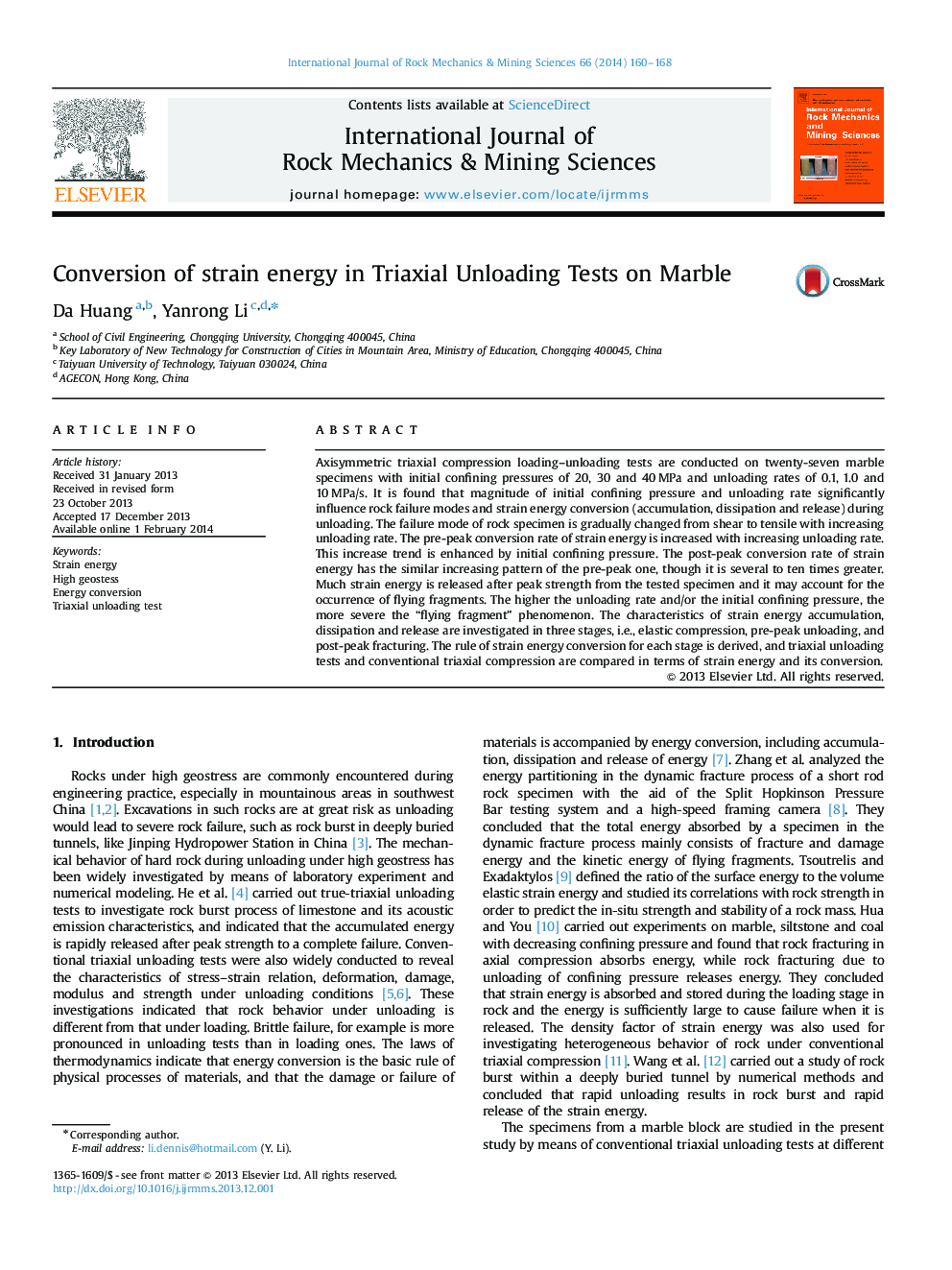| Article ID | Journal | Published Year | Pages | File Type |
|---|---|---|---|---|
| 809364 | International Journal of Rock Mechanics and Mining Sciences | 2014 | 9 Pages |
•Initial confining pressure and unloading rate influences rock failure modes and strain energy conversion (accumulation, dissipation and release) during unloading.•The failure mode of rock specimen is gradually changed from shear to tension with increasing unloading rate.•The pre-peak conversion rate of strain energy is increased with increasing unloading rate.•Much strain energy is released after peak strength, which accounts for the occurrence of flying fragments.•The energy conversion with rock damage process can be divided into three stages: elastic compression, pre-peak unloading and post-peak fracturing.
Axisymmetric triaxial compression loading–unloading tests are conducted on twenty-seven marble specimens with initial confining pressures of 20, 30 and 40 MPa and unloading rates of 0.1, 1.0 and 10 MPa/s. It is found that magnitude of initial confining pressure and unloading rate significantly influence rock failure modes and strain energy conversion (accumulation, dissipation and release) during unloading. The failure mode of rock specimen is gradually changed from shear to tensile with increasing unloading rate. The pre-peak conversion rate of strain energy is increased with increasing unloading rate. This increase trend is enhanced by initial confining pressure. The post-peak conversion rate of strain energy has the similar increasing pattern of the pre-peak one, though it is several to ten times greater. Much strain energy is released after peak strength from the tested specimen and it may account for the occurrence of flying fragments. The higher the unloading rate and/or the initial confining pressure, the more severe the “flying fragment” phenomenon. The characteristics of strain energy accumulation, dissipation and release are investigated in three stages, i.e., elastic compression, pre-peak unloading, and post-peak fracturing. The rule of strain energy conversion for each stage is derived, and triaxial unloading tests and conventional triaxial compression are compared in terms of strain energy and its conversion.
